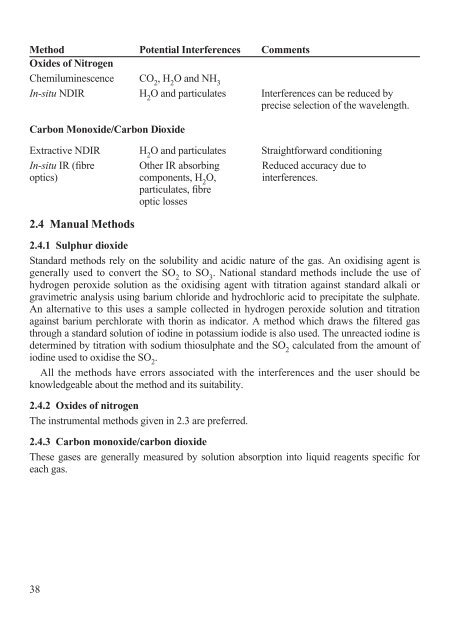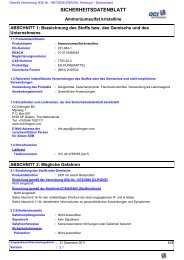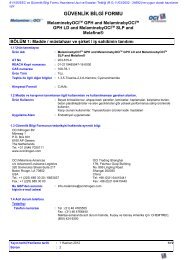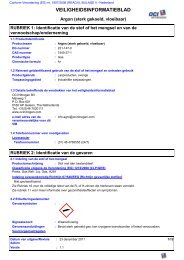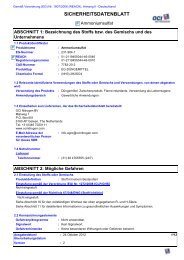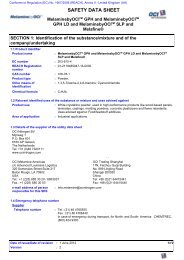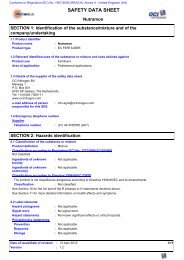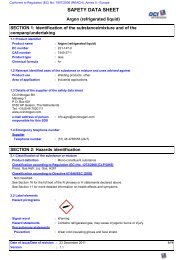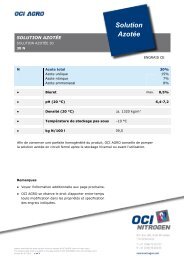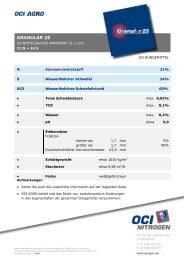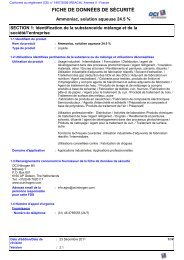PRODUCTION OF AMMONIA - OCI Nitrogen
PRODUCTION OF AMMONIA - OCI Nitrogen
PRODUCTION OF AMMONIA - OCI Nitrogen
Create successful ePaper yourself
Turn your PDF publications into a flip-book with our unique Google optimized e-Paper software.
Method Potential Interferences Comments<br />
Oxides of <strong>Nitrogen</strong><br />
Chemiluminescence CO 2 , H 2 O and NH 3<br />
In-situ NDIR H 2 O and particulates Interferences can be reduced by<br />
precise selection of the wavelength.<br />
Carbon Monoxide/Carbon Dioxide<br />
Extractive NDIR H 2 O and particulates Straightforward conditioning<br />
In-situ IR (fibre Other IR absorbing Reduced accuracy due to<br />
optics) components, H 2 O, interferences.<br />
particulates, fibre<br />
optic losses<br />
2.4 Manual Methods<br />
2.4.1 Sulphur dioxide<br />
Standard methods rely on the solubility and acidic nature of the gas. An oxidising agent is<br />
generally used to convert the SO 2 to SO 3 . National standard methods include the use of<br />
hydrogen peroxide solution as the oxidising agent with titration against standard alkali or<br />
gravimetric analysis using barium chloride and hydrochloric acid to precipitate the sulphate.<br />
An alternative to this uses a sample collected in hydrogen peroxide solution and titration<br />
against barium perchlorate with thorin as indicator. A method which draws the filtered gas<br />
through a standard solution of iodine in potassium iodide is also used. The unreacted iodine is<br />
determined by titration with sodium thiosulphate and the SO 2 calculated from the amount of<br />
iodine used to oxidise the SO 2 .<br />
All the methods have errors associated with the interferences and the user should be<br />
knowledgeable about the method and its suitability.<br />
2.4.2 Oxides of nitrogen<br />
The instrumental methods given in 2.3 are preferred.<br />
2.4.3 Carbon monoxide/carbon dioxide<br />
These gases are generally measured by solution absorption into liquid reagents specific for<br />
each gas.<br />
38


